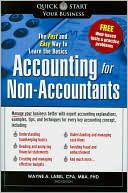Category Books
- Fiction Books & Literature
- Graphic Novels
- Horror
- Mystery & Crime
- Poetry
- Romance Books
- Science Fiction & Fantasy
- Thrillers
- Westerns
- Ages 0-2
- Ages 3-5
- Ages 6-8
- Ages 9-12
- Teens
- Children's Books
- African Americans
- Antiques & Collectibles
- Art, Architecture & Photography
- Bibles & Bible Studies
- Biography
- Business Books
- Christianity
- Computer Books & Technology Books
- Cookbooks, Food & Wine
- Crafts & Hobbies Books
- Education & Teaching
- Engineering
- Entertainment
- Foreign Languages
- Game Books
- Gay & Lesbian
- Health Books, Diet & Fitness Books
- History
- Home & Garden
- Humor Books
- Judaism & Judaica
- Law
- Medical Books
- New Age & Spirituality
- Nonfiction
- Parenting & Family
- Pets
- Philosophy
- Political Books & Current Events Books
- Psychology & Psychotherapy
- Reference
- Religion Books
- Science & Nature
- Self Improvement
- Sex & Relationships
- Social Sciences
- Sports & Adventure
- Study Guides & Test Prep
- Travel
- True Crime
- Weddings
- Women's Studies
Accounting for Non-Accountants: The Fast and Easy Way to Learn the Basics »

Authors: Wayne Label
ISBN-13: 9781402222634, ISBN-10: 1402222637
Format: Paperback
Publisher: Sourcebooks, Incorporated
Date Published: January 2010
Edition: (Non-applicable)
Author Biography: Wayne Label
Wayne Label has an MBA and PhD from UCLA. He has worked for the American Institute of of Certified Public Accountants, as well as various other academic posts.
Book Synopsis
Accounting for Non-Accountants is the perfect accounting guide for anyone who has never taken an accounting class, and has no idea what a balance sheet, income statement, or statement of cash flow is.
Table of Contents
Acknowledgements xi
Introduction xiii
Chapter 1 Introducing Accounting and Financial Statements 1
• What Is Accounting?
• Who Uses Accounting Information?
• Financial Statements
• How Different Business Entities Present Accounting Information
Chapter 2 Generally Accepted Accounting Principles 11
• Who Are the SEC, AICPA, FASB, and IASB?
• Generally Accepted Accounting Principles (GAAP)
Chapter 3 The Balance Sheet and Its Components 25
• Understanding the Balance Sheet
• The Accounting Equation
• The Components of the Balance Sheet
• The Transactions Behind the Balance Sheet
Chapter 4 The Income Statement 45
• Understanding the Income Statement
• The Income Statement Illustrated
• Transactions That Affect the Income Statement
Chapter 5 Preparing and Using a Statement of Cash Flows 65
• What Is a Statement of Cash Flows?
• Cash and Cash Equivalents
• The Statement of Cash Flows Illustrated
Chapter 6 The Corporation 75
• The Corporation Defined
• What Is Capital Stock?
• Dividends and Splits
• Incorporating Solana Beach Bicycle Company
• What Is Treasury Stock?
Chapter 7 Double-Entry Accounting 97
• The General Journal
• The General Ledger
• Adjusting Journal Entries
• Closing Journal Entries
Chapter 8 Using Financial Statements for Short-Term Analysis 125
• Using Short-Term Ratios
• Current and Quick Ratios
• Working Capital
• Composition of Assets
Chapter 9 Using Financial Statements for Long-Term Analysis 137
• Quality of Earnings
• Rate of Return onInvestment
• Sales-Based Ratios or Percentages
• Earnings Data
• Long-Term Debt Position
• Dividend Data
• Footnotes
Chapter 10 Budgeting for Your Business 149
• What Is a Budget?
• Planning and Control
• Advantages of Budgeting
• The Master Budget
• Sales Budget
• Capital Budget
• Budgeted Income Statement
• The Cash Budget
Chapter 11 Audits and Auditors 159
• What Is an Audit?
• Types of Auditors
• The Standard Audit Opinion Illustrated
• The Parts of the Report
• Other Types of Audit Reports
• Why Audits Are Useful to You
• Other Services Provided by Auditors
Chapter 12 Fraud and Ethics 175
• Fraud Defined
• What Causes Fraud
• How Fraud is Committed
• Ethics
Appendix A Internet for Accountants 183
Appendix B Frequently Asked Questions 189
Appendix C Financial Statements-The Coca-Cola Company 195
Index 211
About The Author 226
Subjects

